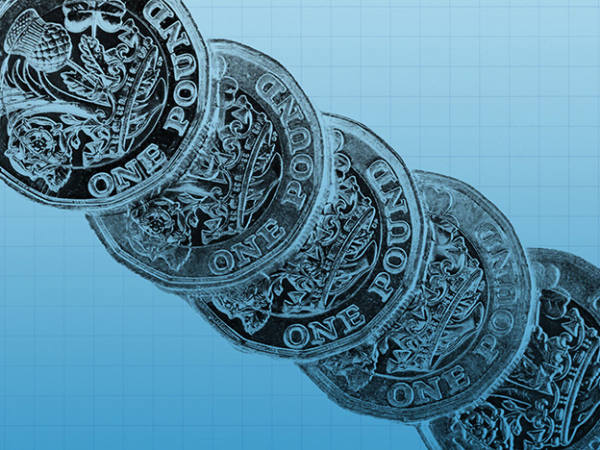- Annuitiy rates have gone up, making a combined approach more attractive
- Default strategies with high bond exposure will struggle to recoup losses
- A dynamic spending drawdown strategy can help you strike the right balance with withdrawals
People planning to retire this year or next year are preparing to do so in trying circumstances. If you have significant equity exposure, your pension pot is likely to have experienced losses and high levels of volatility, and if you derisked by moving into bonds, you might be faring even worse.
There is no easy solution and the idea of delaying retirement is very unappealing to many.
But there are some options, depending on where your pension is held and invested, and how you plan to take it.
Defined contribution pension funds
People invested in a defined contribution (DC) pension with an 'old-school' default investment strategy might be particularly worse off in the current environment, according to AJ Bell. As they approach retirement, the pension is derisked by gradually shifting into an annuity-hedging fund.
The average annuity-hedging fund fell by 38 per cent between the start of 2022 and 24 October. If you are planning to buy an annuity, this should be offset by the increase in annuity rates.
But if you are not, your pension pot will now be considerably smaller than it was one year ago. A typical lifestyle strategy places about 60 per cent of your pension in an annuity-hedging fund one year before retirement, which might translate into a loss of about 23 per cent of your total pension in the year to date.
If you are in that position or faced with a significant pension loss due to market conditions, and are really close to retirement, you should take a good look at your pension withdrawal plans.
Annuities
Naturally, at that point an annuity is something to consider. These have become increasingly more attractive this year: as at the end of September, a 65-year-old could purchase a single life, level, five-year guaranteed annuity paying an annual income of £6,994 for £100,000, according to Hargreaves Lansdown. This was up from an annual income of £4,989 a year ago.
In 2021-22, only one in 10 pension plans was used to purchase an annuity, according to the Financial Conduct Authority. This was partly becaues of low rates, but also because annuities have some drawbacks.
"The downside of those products is that they are not very flexible and you are locked in for good," says Laith Khalaf, head of investment analysis at AJ Bell.
The annuity rate you get depends on a range of factors such as your age, health and the type of annuity you want, notes Shona Lowe, financial planning expert at Abrdn. For example, inflation-linked annuities are typically quite expensive and not necessarily an effective way to inflation-proof your pension.
However, annuities can be used in combination with income drawdown to try and reap the benefits of both strategies. "If we can secure a guaranteed income to satisfy a proportion of our client's expenditure needs, we can then look to drawdown to add in the flexibility," says Faye Church, financial planner at Investec Wealth & Investment.
Cash and income drawdown
Another option is to take your pension as cash – especially if the pot is not very big. But if you plan to do this managing a big loss close to retirement is tricky and your options might be quite limited.
"Taking money out of any investment, including a lump sum from your pension when its value has dropped, can give you confidence you won't lose any more, but it also takes away your opportunity to regain some or all of that lost value," says Lowe. "You could also find yourself with a tax bill to pay and reduce the amount you can put into your pension in the future so this needs to be a very carefully thought out decision."
Broadly speaking, a good way to prepare for withdrawing the cash is to sell your investments gradually as you approach retirement, coming out of markets at different points to reduce the impact of any market falls, Khalaf says.
Alternatively, you could remain invested and draw income from your pension pot. This strategy is less vulnerable to short-term market crashes because the majority of your pot is invested for the medium to long term.
In this case, as often with investing, the golden rule is to keep calm and carry on. "Markets fall – it's part and parcel of investing," says Zoe Dagless, senior financial planner at Vanguard. "Emotional responses such as panicking and putting [everything] in cash can lead to expensive investment mistakes. And trying to time the markets can be futile, as typically extreme market movements often occur in close proximity to one another."
You want to avoid capitalising any losses, although this doesn't mean that you cannot have another look at your investment strategy, risk profile and retirement plans to make sure everything is in place. Doing this is especially important if you are in a default strategy within a DC pension scheme. If this is the case, make sure that your retirement age is set right and that your strategy matches your plans.
In particular, if your pot was derisked into bonds through one of the lifecycle strategies mentioned above, waiting for prices to rebound might not always be the best strategy.
"The bond market isn't really like the equity markets," stresses Khalaf. Bond prices depend on interest rates which were exceptionally low for a long time before this year.
"I think you'd be quite brave to think that they are going to get back there," he adds. "It seems unlikely to me that you are going to make back the capital losses that have been registered on bonds [though] you might make back some of them."
It should be easy to switch strategies while staying in your pension scheme and in most cases costs should be minimal. Some schemes might only have few a funds available, in which case consider transferring to a provider with greater choice.
Dynamic spending
Even with the best possible retirement strategy, a pension pot loss might mean you need to reduce your spending – at least for a while.
Dagless suggests taking income via a "dynamic spending” drawdown strategy. This involves agreeing a drawdown level expressed as a percentage of your initial portfolio, say 4 per cent. You also need to set a 'ceiling' and 'floor' to determine by how much the portfolio withdrawals could fluctuate from year to year, to limit the effect of market movements on your income.
This strategy is reviewed every year and aims to find a balance between withdrawing a fixed sum plus inflation every year, which might jeopardise the long-term viability of your retirement plans if you take too much and markets fall, and simply taking a percentage of your portfolio, meaning that your annual income will vary quite significantly depending on market movements.
In the years when you have less to spend because of market downturns, it helps to have clear goals and distinguish between essential and 'nice to have' costs.
“Once you understand that, you can start to understand your capacity for loss, the level of risk you're willing to take with your investments and your comfort with altering your withdrawal amount in retirement, if needed," says Dagless.
During market volatility, you could also use some of your cash savings rather than selling investments, to avoid crystallising losses.










